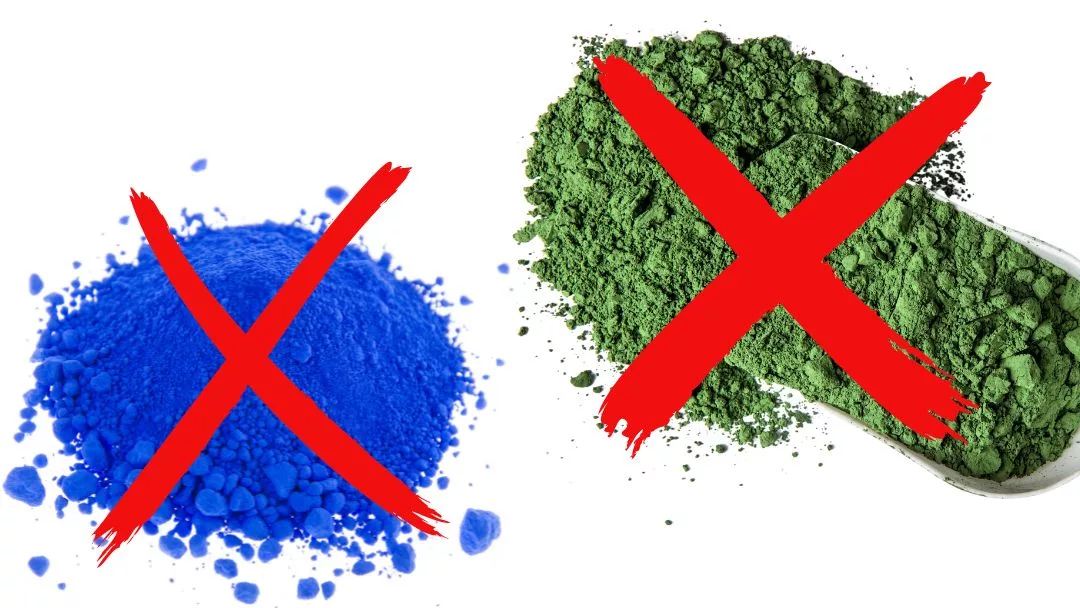
Why Is It So Hard to Find Body Safe Blue and Green Pigments?
Posted on
Last Updated

Posted on
Last Updated
It's really hard to find some colors in body-safe pigments...
Why is that?
There was a recent question on Reddit about the difficulty a maker was having in finding blue and green body safe pigments for making silicone sex toys.
This was something that I had noticed a long time ago, but it’s kind of just become part of my mental knowledge base so I forget that folks who are new to making dildos might struggle.
The reason that body safe blue and green pigments are hard to find is that the most common chemicals for making those colors are toxic to some degree.
(Please note that body safety is critical and the FDA/EU guidelines for pigment safety can be a bit of a moving target. Always double-check that the pigment that you want to use is still considered safe in your particular jurisdiction.)
Blue pigments often use ferrocyanide for the blue part – and if you look closely you notice that CYANIDE is part of that! Cyanide is toxic to humans and animals and in popular culture it’s often used as a poison.
Another option that is sometimes used to make blue pigments is cobalt which is also not body-safe. Fun fact, cobalt is often radioactive!
Lapis lazuli is also sometimes used for making blue pigments – however, when lapis lazuli comes in contact with water it releases sulphur compounds which can be toxic as the pyrite starts to dissolve into the water.
There’s a lot of history that we can go into about how pigments have been made through out the ages by artists, but it’s not really needed here. The main thing to note is that pigments often come from nature and nature likes to protect itself through chemical warfare. While the color might look attractive to a pollenating insect, the plant doesn’t want the flowers to be eaten so it has developed a chemical defense.
But what about green pigments?
Green pigments on the other hand often use chromium oxide as the green part. And again, the chromium is toxic to humans and animals.
There is a whole category of science devoted to developing pigments. A recent article noted that for the first time in 200 years a new blue pigment had been developed. Imagine that – the blue pigments that we use were developed hundreds of years ago by artists. (YInMn Blue – the first new blue pigment identified in 200 years)
Below I’ll list some mica based powder pigment that can be used. But there is another option if you can’t find the right color.
The Silc-pig pigments from Smooth-on are certified body safe. The main problem that people have with the Silc-pig pigments is that they are very rich, but flat colors and they do not have the shimmer of mica based pigments.
BUT – you can add white mica based pigment to your Silc-pig and get the rich color of the Silc-pig with the shimmer of mica based pigments. Win-win!
I’ve gathered a few options from TKB Trading that are body safe. Interestingly, the US guidelines seem to be stricter than the EU guidelines so if it’s safe in the US, it’s very likely to be considered safe in the EU
Blue (US and EU body safe)
Blue (EU only)
Green (US and EU body safe)
And with that, I am out…
And I’ll catch you next time!
